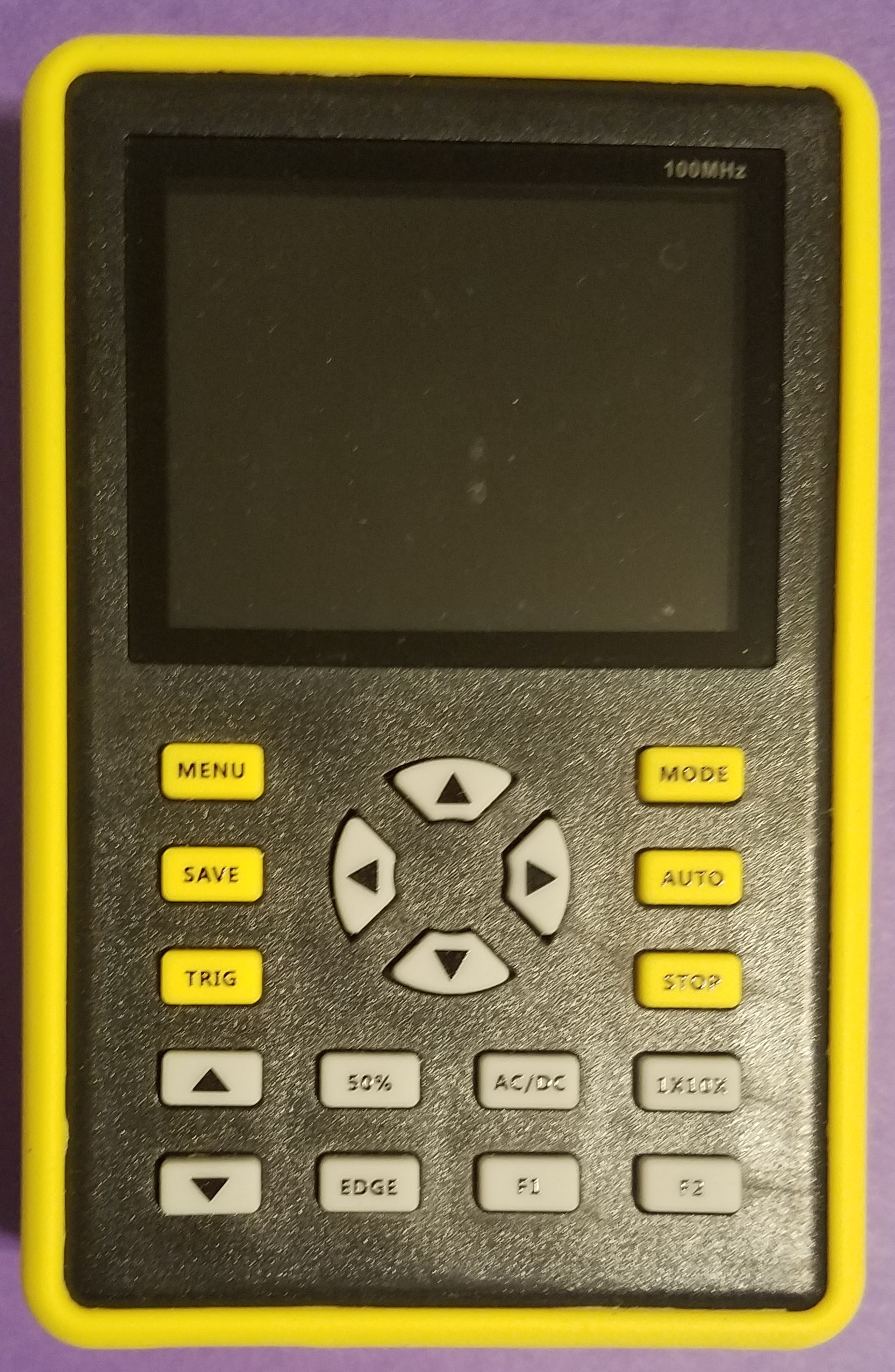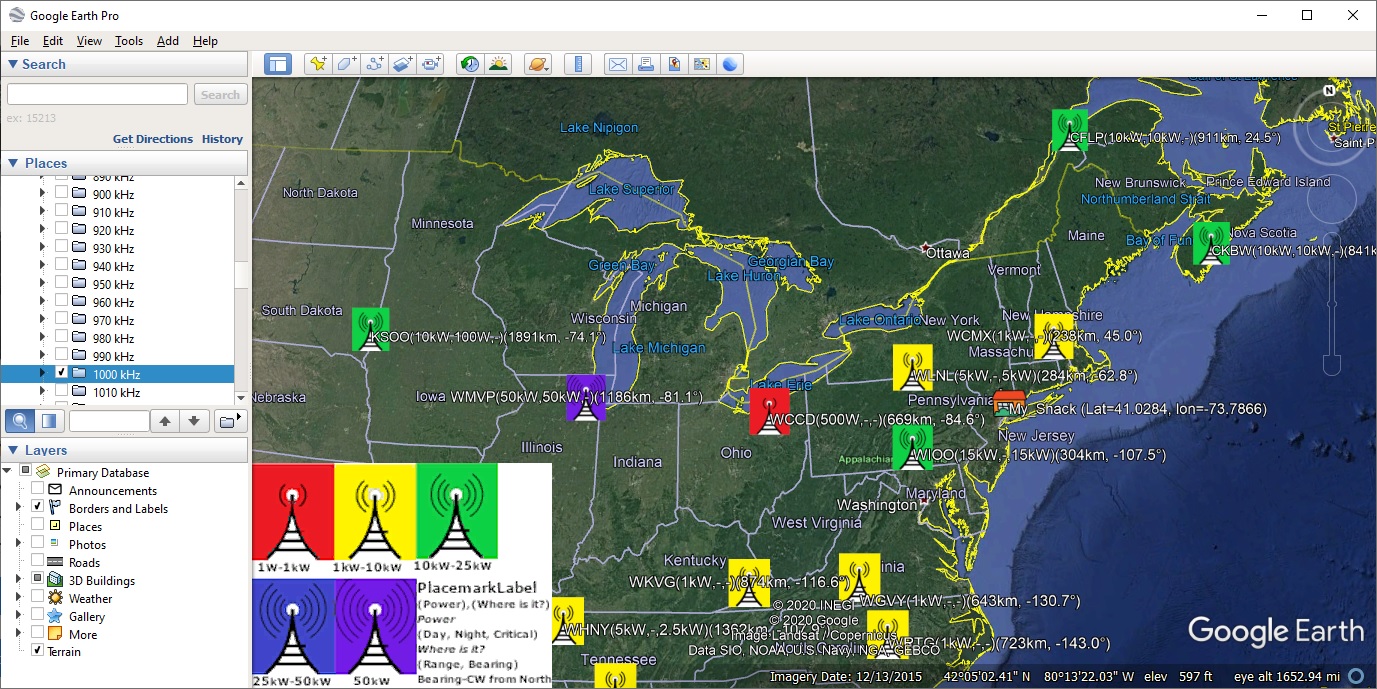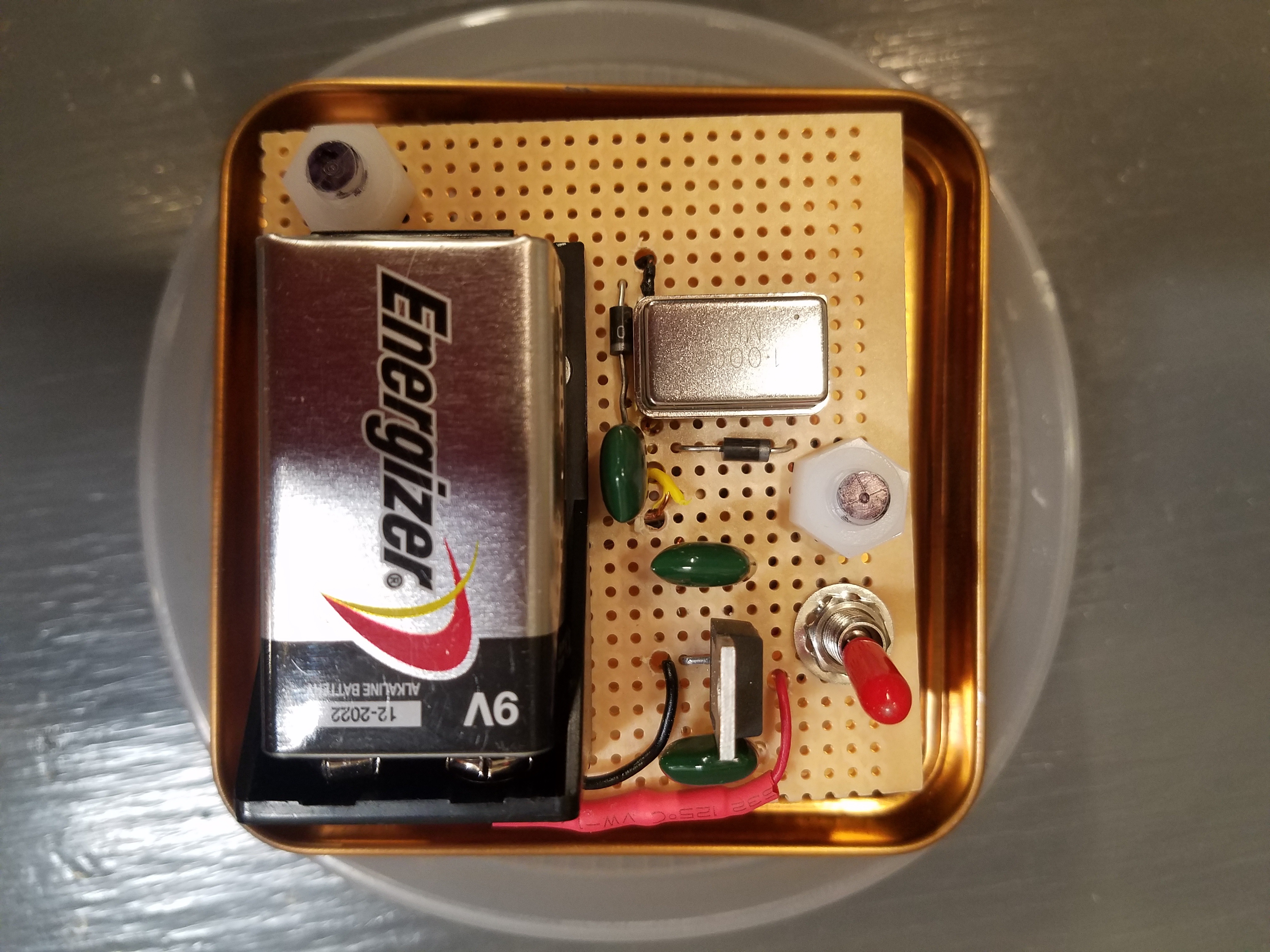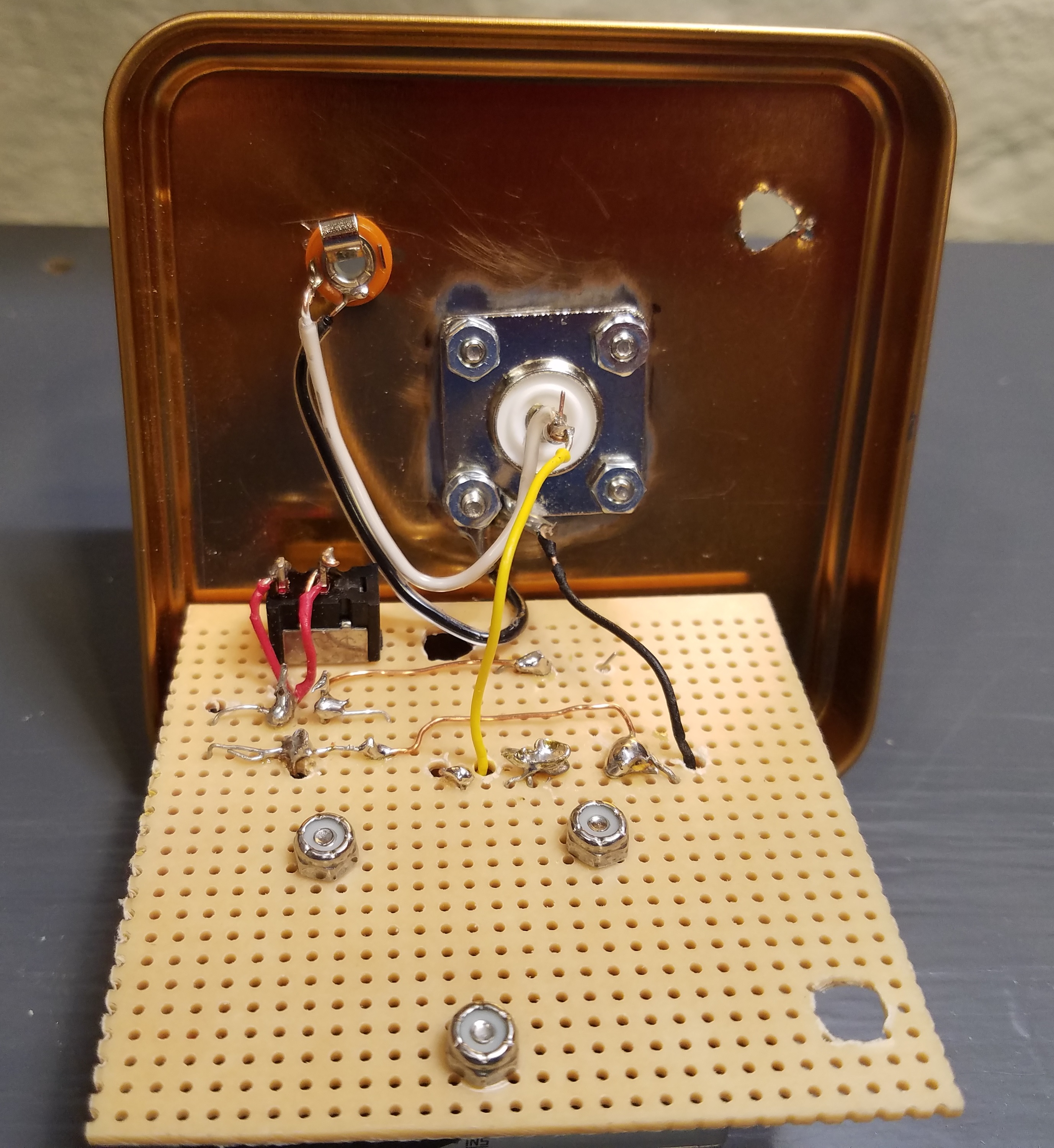
One MHz Transmitter/Signal Source
Four or five years ago I built am AM Broadcast Band box loop antenna. It was the first one I built. It works pretty well but recently I started wondering if it could work better. I used a non-trivial amount of metal in the antenna. It rests on a metal carousel. Four metal L brackets are used to fasten the antenna structure to the base. In addition, I used several terminal strips to test different wiring and tuning strategies. And lastly, the two cables, one for signal and one for a varactor tuning circuit attach at top of antenna and tend to droop down across face of antenna.
I was talking to my father about it and I told him I was going to switch to a plastic carousel and get rid of all the metal I could in the construction. He said "Sounds like a good idea. I wonder how much difference it will make. It would be neat to try and measure it." He was right, that did sound like a fun project.
So, the first order of business was to come up with a signal source for the test. I considered just using a local commercial station as a signal source. But, that did not sit well with me. The signal strength "should" be constant but, it just did not feel like I had enough control over the test conditions. I decided to build a small signal source.
I am a software guy who programs down near the hardware. To be honest, the idea of designing an RF signal source was intimidating. I don't have a hidden electronic design superpower, but I have the next best thing, a father who is an electrical engineer. Dad spent his career doing electronics for high energy physics experiments, the atom smashing kind. Electronics he designed was used at the LHC to help discover the Higgs Boson. Cool stuff. Dad said "Look for a can oscillator." I found one at Jameco Electronics. Quickly, the project became less scary.
Schematic

I used KiCad to draw this schematic. The learning curve is not too bad. It's amazing what you get for free.
Circuit Description
The planned use for this transmitter is to use it as a signal source for making antenna pattern measurements of my broadcast band box loop antenna.
7805 Voltage Regulator: I figured that the output amplitude of the oscillator will vary with VCC. Therefore, applying the same VCC to the oscillator each and every time so I get a repeatable output seemed like a worthy design goal.
A 7805 regulator needs an input voltage at least 2 volts greater than the desired output voltage. VCC for the oscillator is 5 volts so a 9-volt battery was a logical choice. And yes, we are throwing away a lot of energy in the regulator but that is not really a concern here. The transmitter will only be on when making measurements and the power requirement of the oscillator is 7 milliamps at 5 volts, a whopping 35 milliwatts. For this application, conserving power is not a concern. And, batteries are inexpensive.
Capacitor C2:The oscillator generates a square wave output. During the low to high transition, current to the oscillator spikes. Regulators are not so good at quickly varying current. That is why we have capacitor C2. It stays charged up and provides extra energy when the current to the oscillator spikes.
Capacitor C3:This protects the oscillator if the output is shorted to ground. If asked, my father, a hardware guy, would probably say "We need to design defensively."" What he would really be thinking is "Even more so when a software guy", I think he meant me, "will be using this device."
Diodes D1 and D2: These are 1N4001 diodes. Any low level signal diode can be used here. The transmitter may be hooked to antennas with non-trivial inductance. During R&D Expedition 2020 Dad and I hooked the antenna output up to a broadband transformer and a Loop Antenna. D1 and D2 protect against any voltage spikes that may occur with an inductive load.
Parts & Equipment
Parts ListIt is hard to do electronics without an oscilloscope. I bought this small scope for less than $100 from amazon.com

Building It
Finished Product
Questions You May Ask
Why 1 Megahertz?
I would like to say choosing 1 Megahertz was the outcome of a detailed investigation. It was not. I like buying from Jameco so I entered "jameco can oscillator" in Google and clicked on the Jameco link for 1 MHz Full Can Crystal Oscillator. The other available can oscillators were 1.843, 2, 4, 10, and 20 Megahertz oscillators.
1 Megahertz worked out nicely. The below map shows 1 Megahertz AM stations in my part of the country. You can see that there are not any strong stations close by that could interfere with my measurements during the day. The map was generated using the Am Station Map generator on my web site.

Dude, there's no way you have a good antenna match and that antenna is too short!
Yup, that definitely turned out to be true.
My father and I took a trip to a cabin in the woods in West Virginia in early October, 2020. We took our radio stuff with us. The goal was to characterize how the transmitter worked and measure the antenna pattern of my AM Broadcast Band Loop antenna. You can read about the results, not what we were hoping for, on the R&D Expedition 2020 page.
Is it Legal?
Yeah, looks like it. This is a link to an FCC page with general information about Unlicensed Operation.
Here is a link to a more technical description of what is and is not allowed. In the Part 15 low-power transmitter frequency table in the 525-1705 kHz row it says "100 mW input to final RF stage" in the Emission Limits table. The 1 Megahertz Can Oscillator I used draws 7 mA at 5 volts (35 mW total). That leads me to believe I am well within legal limits for my device.








